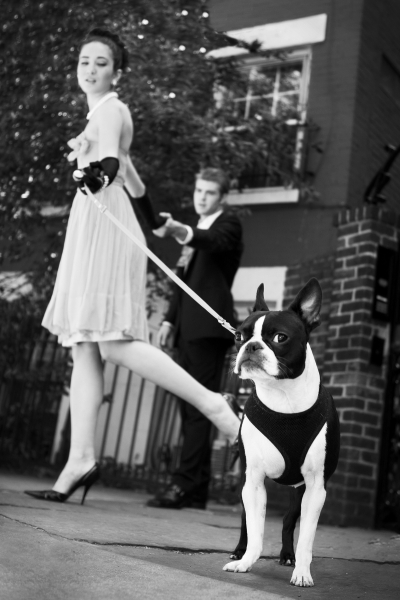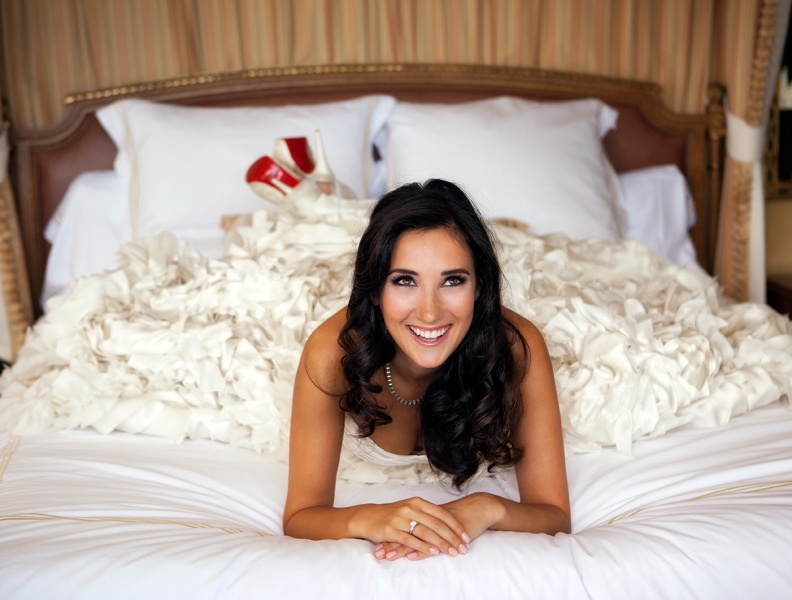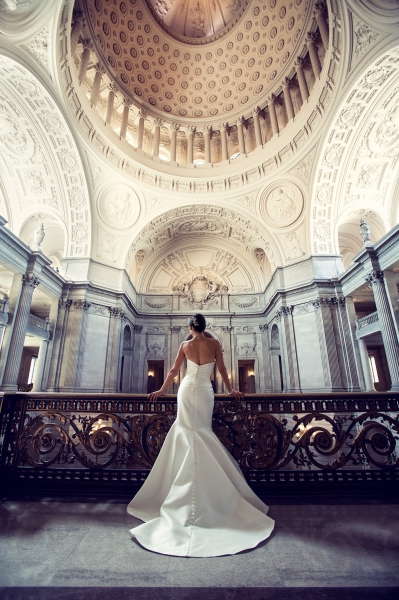Making it work: Catherine Hall takes success as her responsibility
Wedding photographer Catherine Hall discusses what made her photography business a success
1.25.2019
First and foremost, Catherine Hall considers herself a “people photographer.”
In the early days when she was finding her feet, Hall tried a variety of subject matter: photojournalism, landscapes, architecture, travel. While the photographs were technically good, she wasn’t energized by the work. Portraits were another story.
“With people, I realized I was able to bring something unique to the table,” she says. “I felt like I could attract clients willing to pay for my craft and that I could do something different than the photographer next door.”

Based in San Francisco, Hall photographs a mix of lifestyle, commercial, and wedding portraits. She talks to photographers about the importance of finding what makes you happy artistically and staying true to yourself, which leads to booking the type of work that plays to your strengths. Her own strength, she says, is highlighting her subjects’ best qualities.
“People’s own self-perception is not what the world sees,” Hall explains. “It’s about finding the best pieces of someone and using lenses and lighting to accentuate those while using the same tools to diminish those parts that they don’t feel are traditionally beautiful.”
And here’s where the road gets tricky: Who decides what’s beautiful? Hall warns photographers not to let their own assumptions or biases define beauty. Her technique is to ask each new client which features they like most and least about themselves. Even if you disagree with what a client considers to be her worst feature, says Hall, it’s important to hear her out.
“If a client says they don’t like their profile, don’t shoot profile,” says Hall. “They won’t buy that picture. If you can’t rectify it with technique, don’t shoot it. A lot of women don’t like their noses, so I always make sure that I shoot their noses in a way that the angle or lighting doesn’t accentuate whatever it is they don’t like about it. But never ignore what a person says they don’t like, even if you disagree.”
Sometimes the solution is as simple as playing up whatever features the client does like—the eyes, maybe. Other issues can be solved with expert hair and makeup—contouring to slim a face or styling the hair down rather than up. Lighting, lenses, and angles should be brought into play, too. For example, the bride often wants to appear smaller than the groom, so position her slightly behind the groom or photograph down from a higher angle. Hall does as much as possible to accentuate clients’ favored features in camera. For lighting, Hall says she relies on Profoto lights and California Sunbounce reflectors to shape it the way she wants it. She prints her own work to ensure clients are shown at their best.
“You won’t achieve the optimal result if you’re not starting with intention at capture,” she says. “Relying on Photoshop too much is when things start to look fake.”

Hall admits that with 11 years under her belt, what may be second nature to her with regard to lighting, lens selection, posing, and angles may be daunting to newer photographers. And for them, she has advice: Don’t over-analyze.
“Find just one thing,” she says. “Ask the client, ‘What is the one thing you’re most proud of?’ Start with that. Be conscious of that one thing and have your brain practice being aware while shooting. It gets too overwhelming if you’re trying to analyze every aspect of a person when you’re new to this.”
Hall says that if a woman loves her eyes, get several captures that really accentuate the eyes, shots you know she’ll invest in. If she feels she’s 10 pounds too heavy, get plenty of images that make her look slimmer, light her more dramatically. Take it session by session and try not to overthink every detail simultaneously.
“The more you do that, the more automatic it becomes,” says Hall. “Then you’ll find yourself getting more fluid and intentional.”
Hall says it took her eight to nine years to hit her stride, and during that time her style hasn’t changed a lot. Although she works continuously at growing as a photographer, her eye and approach have remained fairly consistent.
“Does that mean I’m stale?” she asks. “No. My shooting just gets better and better. But I’ve always had a sense of who I was and what I was doing, right out of the gate, for my style. My work is modern but classic, and people hire me because of my consistency.”

Hall photographs about 10 weddings each year. Keeping her volume low is part of what keeps her eye fresh—that and her other focus areas of lifestyle and commercial work. But staying low volume means she has to charge higher prices, which is something she has never balked at.
“There is always someone who will buy a Rolls Royce, so there are still people who will pay for premium photography,” she says. “I’m looking at my skills and how I’m obsessed with making things perfect. I’m meticulous and a perfectionist, so it suits my personality to build a business that caters to clients who want that. Which means I have to charge higher prices and do lower volume.”
That perfectionism is what her clients cherish. She works hard. And that was a trait that showed up early on. Years ago, one of her first commercial jobs was for John Deere tractors. It was a lifestyle campaign Hall was to art direct, but the components Hall had to work with during the early morning shoot didn’t deliver results to which she wanted her name attached. So after the initial session (already 8 to 9 hours in), she got in her car, drove around, and found homes and people with John Deere tractors in their yards. Then she created a series of images using real people with real tractors in real environments, which the company preferred in the end. She learned that day not to be afraid to do what it takes to deliver the best results and to remain true to her vision.
“If I had delivered based on what they had originally given me, I would have been a bad photographer,” she says. “They didn’t give me the location, et cetera, I needed. To succeed I had to proactively create a successful environment. It was hard, but it turned out amazing. The reality is that they hired me to do a job, and it was my responsibility to do a good job and make it work. If I don’t make it work, it’s my fault. That’s the biggest reason I’m successful. I don’t allow fear to debilitate me. If I’m scared, I take it as a sign that it’s something I need to do.”
Stephanie Boozer is a writer in Charleston, South Carolina.
Tags: wedding photography


 View Gallery
View Gallery